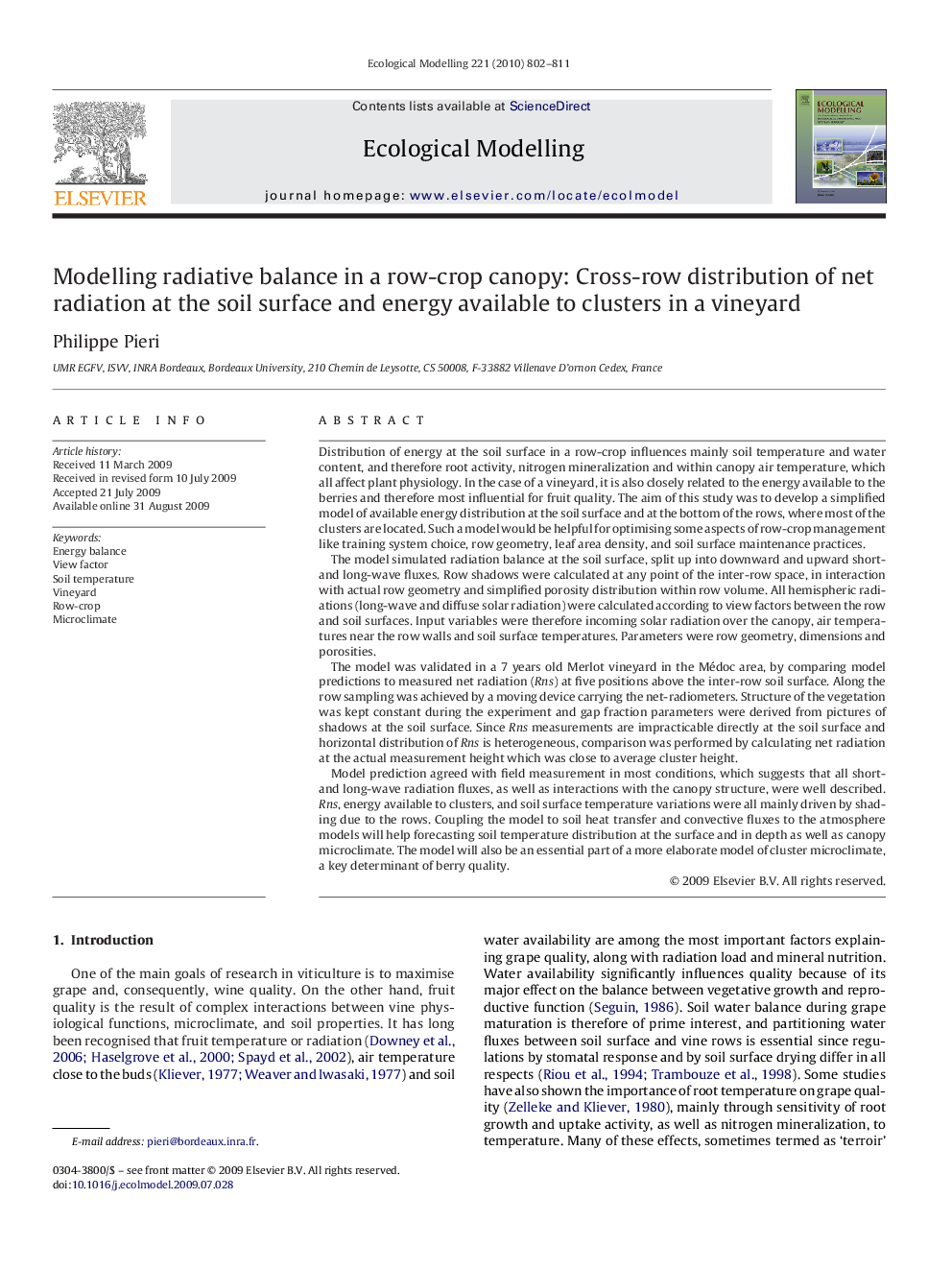| کد مقاله | کد نشریه | سال انتشار | مقاله انگلیسی | نسخه تمام متن |
|---|---|---|---|---|
| 4377339 | 1303422 | 2010 | 10 صفحه PDF | دانلود رایگان |

Distribution of energy at the soil surface in a row-crop influences mainly soil temperature and water content, and therefore root activity, nitrogen mineralization and within canopy air temperature, which all affect plant physiology. In the case of a vineyard, it is also closely related to the energy available to the berries and therefore most influential for fruit quality. The aim of this study was to develop a simplified model of available energy distribution at the soil surface and at the bottom of the rows, where most of the clusters are located. Such a model would be helpful for optimising some aspects of row-crop management like training system choice, row geometry, leaf area density, and soil surface maintenance practices.The model simulated radiation balance at the soil surface, split up into downward and upward short- and long-wave fluxes. Row shadows were calculated at any point of the inter-row space, in interaction with actual row geometry and simplified porosity distribution within row volume. All hemispheric radiations (long-wave and diffuse solar radiation) were calculated according to view factors between the row and soil surfaces. Input variables were therefore incoming solar radiation over the canopy, air temperatures near the row walls and soil surface temperatures. Parameters were row geometry, dimensions and porosities.The model was validated in a 7 years old Merlot vineyard in the Médoc area, by comparing model predictions to measured net radiation (Rns) at five positions above the inter-row soil surface. Along the row sampling was achieved by a moving device carrying the net-radiometers. Structure of the vegetation was kept constant during the experiment and gap fraction parameters were derived from pictures of shadows at the soil surface. Since Rns measurements are impracticable directly at the soil surface and horizontal distribution of Rns is heterogeneous, comparison was performed by calculating net radiation at the actual measurement height which was close to average cluster height.Model prediction agreed with field measurement in most conditions, which suggests that all short- and long-wave radiation fluxes, as well as interactions with the canopy structure, were well described. Rns, energy available to clusters, and soil surface temperature variations were all mainly driven by shading due to the rows. Coupling the model to soil heat transfer and convective fluxes to the atmosphere models will help forecasting soil temperature distribution at the surface and in depth as well as canopy microclimate. The model will also be an essential part of a more elaborate model of cluster microclimate, a key determinant of berry quality.
Journal: Ecological Modelling - Volume 221, Issue 5, 10 March 2010, Pages 802–811